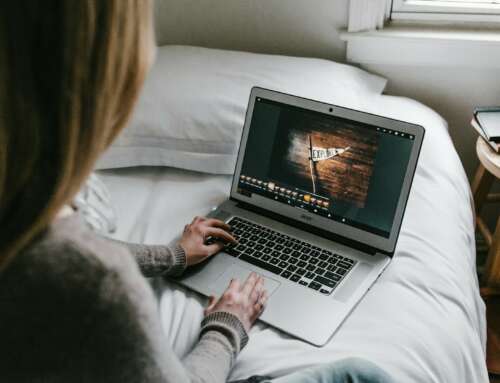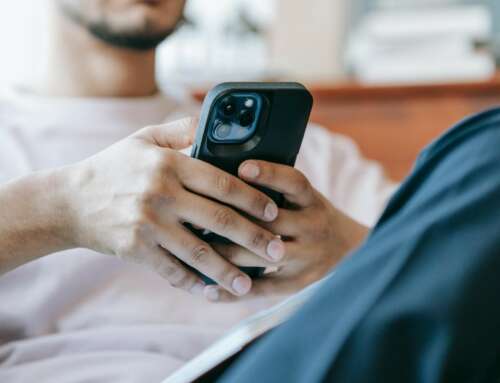Not that long ago, the height of ambition for many children was to be a children’s television presenter. Then there was a brief period when everyone wanted to be an X Factor star.
Okay, we may mourn the days when children dreamt about becoming firemen and astronauts, but all of this sounds quaint now that we are living in the age of Generation Influencer.
Today’s children are not even interested in waiting for the chance to appear on TV once they’ve left school. A survey this week by awin.com showed that one in five (17 per cent) now wants to be a social media influencer and 14 per cent wanted to be a YouTuber – only doctor (18 per cent) scored higher.
So-called influencers can notch up millions of followers by posting about their passions and lives across social media, principally Instagram and YouTube.
And while you or I may not be even aware of their names, the hysteria they generate can match anything once only reserved for pop stars – neatly exemplified this week by beauty YouTuber James Charles, who brought Birmingham city in the UK centre to a standstill after 8,000 fans flocked to see him open a shop.
And, like the pop industry, the influencer industry is big business. A survey published by marketingcharts.com in April 2018 found 22 per cent of 18- to 34-year-olds made a large purchase after seeing an influencer endorse the item – be that games, fashion, make-up or hotels.
Often brands offer free clothes and holidays, payments per post or longer-term sponsorship and brand ambassadorships in return. The most popular are hired to promote launch events and to speak at conferences such as VidConLondon, which will bring together some of the world’s most famous influencers this month.
Indeed, so important is the influencer industry – digital marketing experts ClickZ says it will be worth $AU13.8 billion by 2020 – that the Competition and Markets Authority announced last week online endorsements must be more transparent from now on.
It’s impossible to say how much each individual would get paid for a product mention, says Sarah Jane Thoms, account executive at PR company Fourth Day: “It could be hundreds or thousands, depending on follower count and perceived influence.”
The honour for the most followed YouTuber goes to PewDiePie (known to his parents as Felix Kjellberg), who has 83.39 million subscribers to his channel – that’s slightly more than the population of Germany. His videos have racked up more than 20 billion views and aged 29, he’s now worth an estimated $27 million.
PewDiePie lives in Brighton in the UK, home also to influencer royalty siblings Zo (Zoella) and Joe Sugg, who have both used their status (from vlogging about beauty, fashion, games and pranks) as a platform for substantial careers. Zo, 28, has beauty lines and books behind her. Joe, 27, was a recent favourite on Strictly Come Dancing.
All are, of course, old hat to teenagers who follow a new tranche of star including 19-year-old Misha Grimes (followers: 136,000 YouTube, 62,600 Instagram), 17-year-old Olivia Grace (144,000 YouTube, 65,900 Instagram) and Jenk Oz (58,800 Instagram) who at 13 created iCoolKid, an online community.
But many parents are confused about whether to encourage this ambition, as the downsides quickly become apparent.
One mother tells how when her daughter was 11, obsessed with influencers herself, she launched a YouTube channel playing around with make-up. “It was cringeworthy,” admits the mum. “Then some boys in her class heard about it and started leaving nasty comments, saying how spotty she was.” After the teasing became unrelenting, she retreated.
Carmen Greco, Jenk Oz’s mother, says that she was worried when her son, began to start getting noticed online. “Due to Jenk’s age,” she says, “we have been there every step of the way to help him process what was happening and manage the pitfalls and asked repeatedly if he was happy and comfortable.”
Jenk’s fame has not been “an overnight explosion”, she says, but iCoolKid now has 5,000 visitors per day, more than 140,000 followers on social media and Jenk has spoken at the Model UN Conference and the Teen Young Entrepreneur’s Conference.
Psychotherapist Samantha Carbon agrees that there are potential problems for young influencers, which both they and their parents need to understand.
“As social media is evolving,” says Carbon, “there is a risk young influencers may experience feelings of inadequacy and feeling challenged as they get older, which can be detrimental to emotional wellbeing.”
Noted older YouTubers, including Zoella, have talked openly about suffering with anxiety, and YouTuber burnout is very real.
Elle Mills, (1.2 million YouTube) whose coming-of-age videos went viral and whose video, in which she came out as bisexual in November 2017, pushed her over the million-subscriber mark, shocked her fans when she uploaded a video last May that showed her mid-breakdown. “My life just changed so fast,” she says. “My anxiety and depression keeps getting worse. I’m just waiting to hit breaking point.”
Rubén “El Rubius” Gundersen (33 million YouTube), a Spanish-Norwegian personality known for his gaming vlogs, used his platform to explain he feared burning out and was taking a break for his mental health. What started as light-hearted entertainment had become a huge source of stress.
Though how much you feel the pressure may depend on your reasons for becoming an influencer in the first place. One YouTuber who is becoming better known outside her age group is inspirational 14-year-old Nikki Lilly (532,000 YouTube, 119,000 Instagram), whose vlogging began in response to life-changing illness.
Nikki was diagnosed with arteriovenous malformation – a congenital blood vessel malformation in her face that caused it to swell – when she was six and began making videos for fun. Since then her positive take on life (and work) has seen her launch her own CBBC series Nikki Lilly Meets, plus win Junior Bake Off and a Pride of Britain award in 2016.
She was nominated for a Bafta and an Emmy for her episode of My Life, Born to Vlog, on CBBC, and a second, I Will Survive.
Her response to this fame is down to earth: “I don’t see myself as an influencer. I just make videos talking about what I love, and the ups and downs of my life and I am happy that people enjoy what I do.”
Misha who has been vlogging about fashion for the past two years, is also positive about her experiences over all, but does admit that she has lost some friends. “Just like in real life not everyone is going to like you. By promoting yourself online you’re giving people the right to comment on the good, the bad and the ugly if they so please.”
This was something George Christou, Nikki’s father, was concerned about. His daughter’s medical condition could have made her the victim and as a result, when she began posting, he moderated comments.
Yet, he says, “99.9 per cent were positive”, adding: “Nikki’s life had been on hold since she was diagnosed. This has been a saviour for her, opening up all these opportunities.”
No one should doubt Nikki’s commitment – or indeed any of the others, but Grace warns that “juggling YouTube and full-time college can definitely be a challenge at times with balancing the workloads”.
Misha admits that, “like any self-employed career, this has its drawbacks be it 3am bedtimes, late payments, lack of financial security or being an easy target for hate”.
So given the pace of change, can being an influencer really be a viable career option?
It seems to have worked out well for Nikki and Misha is also confident that she is on a path to something – even if she doesn’t know what yet. “I will forever post to YouTube,” she says, “and whether people will watch me in 10 years I don’t know but right now I can’t see myself doing anything else.”
Whether she herself will feel the same a decade on, is anyone’s guess.
– Victoria Lambert, Essential Kids
Read more: So Your Child Wants to Be a Youtuber, What Now?
Feature photo by JoJo Siwa on Wikimedia Commons








Leave A Comment